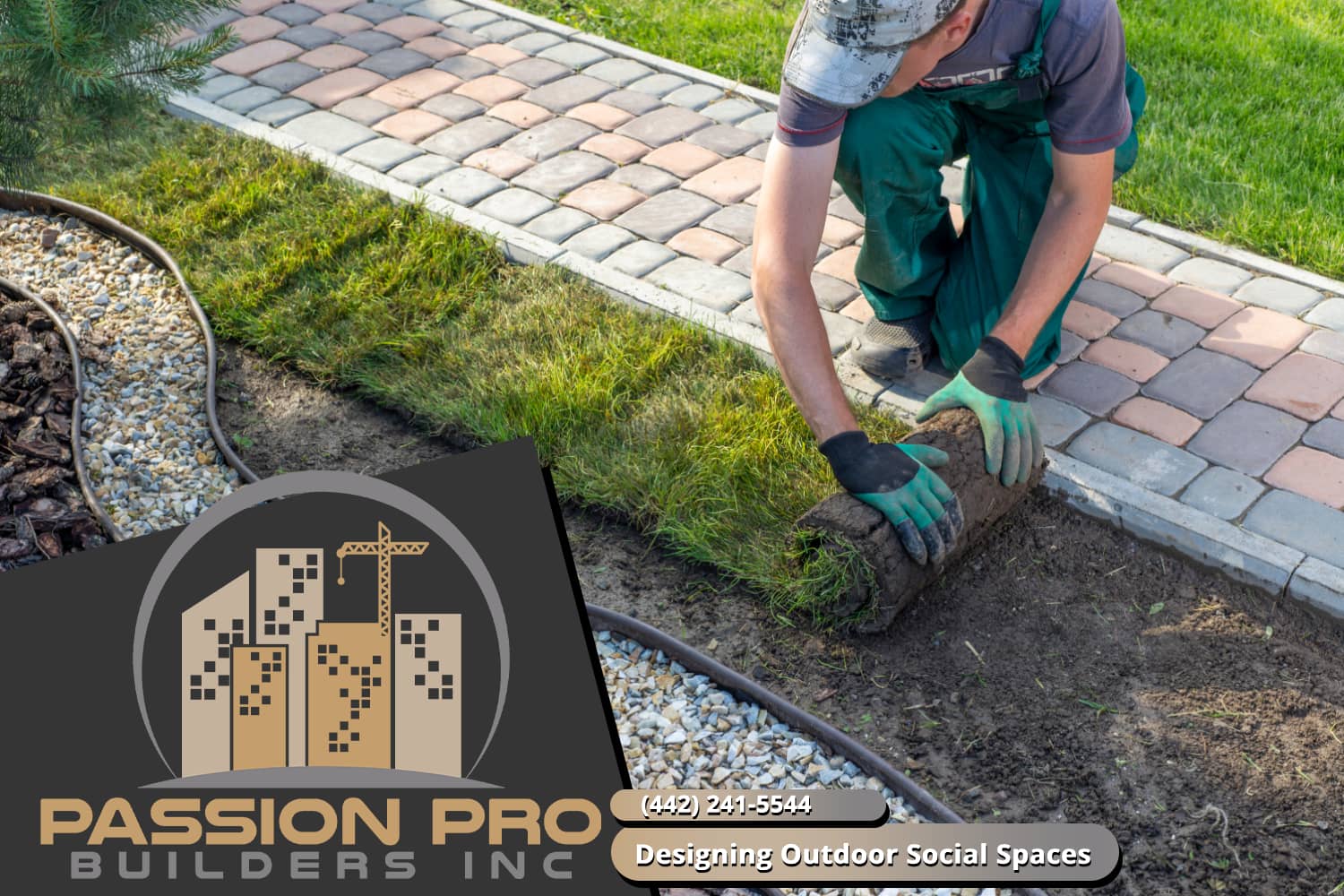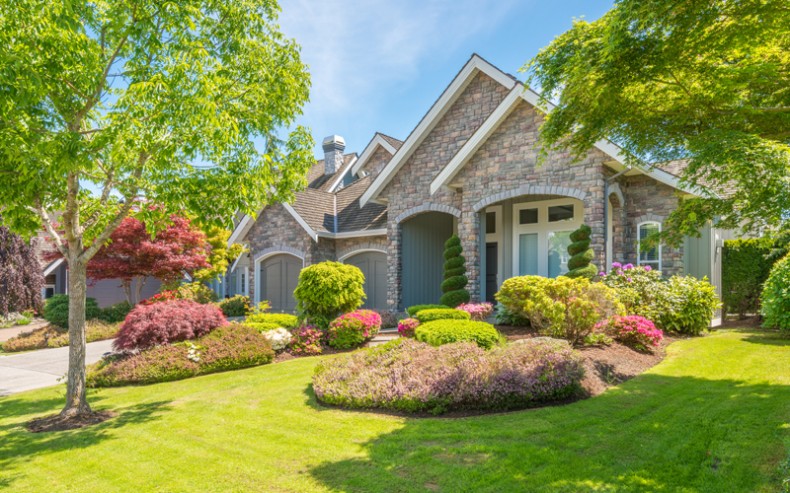10 Simple Techniques For Hilton Head Landscapes
10 Simple Techniques For Hilton Head Landscapes
Blog Article
The 15-Second Trick For Hilton Head Landscapes
Table of ContentsHilton Head Landscapes - An OverviewThe Ultimate Guide To Hilton Head LandscapesThe Best Guide To Hilton Head LandscapesThe Basic Principles Of Hilton Head Landscapes Hilton Head Landscapes for DummiesFacts About Hilton Head Landscapes RevealedThe Single Strategy To Use For Hilton Head LandscapesThe Definitive Guide to Hilton Head Landscapes
Type compatibility is additionally a significant component of unity in designone or more noticeably various types are great for contrast and focus, however usually all other forms should have some resemblances for a merged appearance. Structure describes exactly how coarse or great the surface of the plant or hardscape material really feels and/or looks.
Instances of plants with coarse structure include philodendrons, agaves, bromeliads, hollies, palms, and hydrangeas. Qualities that create great structure include small foliage; slim, strappy fallen leaves (grasses) or tall, slim stems; little, dense branches and tiny branches; long stems (creeping plants); and little, delicate blossoms.
The smart Trick of Hilton Head Landscapes That Nobody is Discussing
A lot of plants are medium structure, in that they can not be described as having either crude or great structure. They are identified by medium-sized fallen leaves with simple forms and smooth edges. The average-sized branches are not largely spaced nor commonly spaced, and the overall type is generally rounded or mounding. Medium-textured plants act as a background to web link and merge the crude- and fine-textured plants.

To make a room really feel smaller, place the rugged textures along the external perimeter and the great textures closest to the viewer. The information of the crude structure makes the plants show up closer and makes the room feel smaller. The viewed appearance of plants can additionally change with the range from the plant.
Not known Facts About Hilton Head Landscapes
Vibrant shades increase the comparison and make the structure appear coarser, while muted colors can squash appearance. Hardscape with a crude texturesuch as very harsh rocks and bold, large timberstends to make all plant material show up extra moderate distinctive. Developers frequently develop an appearance research study (Number 8) on paper to aid choose the setup of plant products.
Color in plant product and hardscape includes interest and range to the landscape. Shade is the most obvious element in the landscape and is normally the emphasis of many home owners; nevertheless, it is also the most short-lived element, usually lasting just a few weeks a year for specific plants.
Hilton Head Landscapes Things To Know Before You Get This
A straightforward description of the shade wheel consists of the three main colors of red, blue, and yellow; the three secondary shades (a mix of two primaries) of environment-friendly, orange, and violet; and six tertiary colors (a mix of one nearby key and additional shade), such as red-orange. Shade theory discusses the partnership of shades per other and exactly how they should be used in a structure.

Similar (sometimes called harmonious) color pattern are any kind of 3 to 5 colors that are surrounding on the color wheel, such as red, red-orange, orange, yellow-orange, and yellow, or blue, blue-violet, and violet (bluffton landscaping). The colors belong per various other since they commonly include 2 primaries blended to create a secondary and two tertiary shades, which indicates they share common buildings
They tend to have high contrast between them. The most typical collections are violet and yellow, red and eco-friendly, and blue and orange. Corresponding shades are frequently discovered normally in blossoms; a typical pair is yellow and violet. Color is found in the blossoms, foliage, bark, and fruit of plants.
Some Known Details About Hilton Head Landscapes
Environment-friendly foliage in all its different tones is the dominant shade by quantity, however other shades capture attention quicker since of their high contrast to the color green. Color is likewise located in structures, rocks, pavers, timber, and furnishings. Most shades in natural products, such as stone and wood, are generally muted and often tend to be variations of brownish, tan, and light yellow.
Shades have homes that can affect feelings, spatial understanding, light quality, equilibrium, and focus. Great colors have a tendency to be soothing and need to be utilized in areas for leisure and peacefulness.
5 Simple Techniques For Hilton Head Landscapes
The "temperature level" of shades can additionally impact the perception of range. Awesome shades often tend to recede and are viewed as being farther away, making an area really feel bigger. Cozy shades tend to advancement and are regarded as being better, making a room really feel smaller. Color can additionally visit this web-site be used to catch interest and direct views.
For instance, bright yellow, which has the greatest intensity, likewise has a high contrast with all other shades (usually called a "pop" of color) and should be conserved. A percentage of extreme color has as much aesthetic weight as a big amount of a much more subdued or weak color.
Similar (sometimes called harmonious) color pattern are any type of three to 5 shades that are surrounding on the shade wheel, such as red, red-orange, orange, yellow-orange, and yellow, or blue, blue-violet, and violet. The shades belong per various other because they commonly include two main colors mixed to form an additional and two tertiary shades, which suggests they share common residential properties.
Get This Report on Hilton Head Landscapes
They have a tendency to have high comparison in between them. One of the most typical collections are violet and yellow, red and green, and blue and orange. Corresponding colors are usually found naturally in flowers; an usual set is yellow and violet. Shade is discovered in the blossoms, vegetation, bark, and fruit of plants.
Eco-friendly foliage in all its various shades is the dominant shade by quantity, but various other shades record attention quicker due to their high contrast to the color environment-friendly - landscapers hilton head island - https://www.cheaperseeker.com/u/h1tnhdlndscps. Color is likewise found in structures, rocks, pavers, timber, and furniture. The majority of colors in all-natural products, such as rock and timber, are usually low-key and tend to be variations of brown, tan, and light yellow
Hilton Head Landscapes for Dummies
Shade is a vital component for developing rate of interest and range in the landscape. Shades have residential or commercial properties that can influence feelings, spatial perception, light high quality, equilibrium, and focus. One residential property of color is defined family member to temperaturecolors show up to be cool or cozy and can influence emotions or sensations. Cool shades tend to be relaxing and need to be made use of in locations for relaxation and serenity.
The "temperature" of shades can also influence the understanding of distance. Trendy colors tend to decline and are regarded as being further away, making a space really feel larger. Warm shades have a tendency to development and are perceived as being closer, making an area feel smaller. Color can additionally be made use of to record focus and straight views.
For instance, bright yellow, which has the highest possible intensity, additionally has a high contrast with all other colors (frequently called a "pop" of color) and need to be conserved. A tiny amount of extreme shade has as much visual weight as a huge quantity of an extra suppressed or weaker color.
Report this page